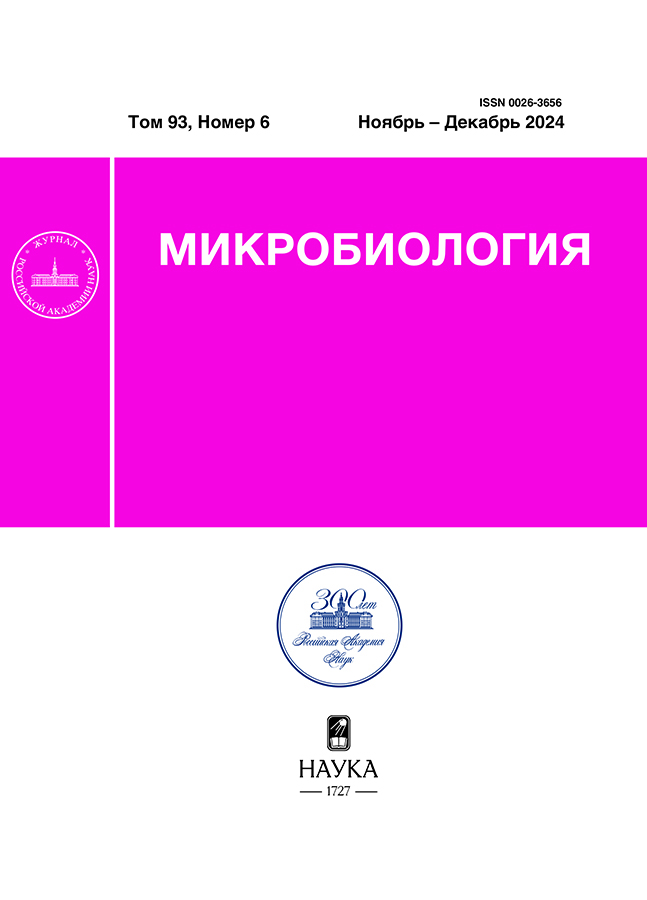Induction of alcohol dehydrogenase in Yarrowia lipolytica yeast under stress conditions
- Authors: Biryukova E.N.1, Arinbasarova A.Y.1, Medentsev A.G.1
-
Affiliations:
- Federal Research Center “Pushchino Scientific Center for Biological Research of the Russian Academy of Sciences”
- Issue: Vol 93, No 6 (2024)
- Pages: 884-888
- Section: SHORT COMMUNICATIONS
- URL: https://jdigitaldiagnostics.com/0026-3656/article/view/655069
- DOI: https://doi.org/10.31857/S0026365624060182
- ID: 655069
Cite item
Abstract
It has been shown for the first time that under stress conditions, the yeast Yarrowia lipolytica exhibits activity of alcohol dehydrogenase along with antioxidant enzymes. During growth on glucose, during the transition of yeast from the exponential to the stationary growth phase, caused by glucose depletion, the ability of cells to oxidize ethanol was detected. Under conditions of oxidative and thermal stress, the induction of alcohol dehydrogenase is associated with an increase in the activity of antioxidant enzymes, in particular, catalase, superoxide dismutase, glucose-6-phosphate dehydrogenase and glutathione reductase. A decrease in the intracellular level of ATP and cAMP in Y. lipolytica under various stress conditions was shown, which correlates with an increase in the activity of antioxidant systems and NAD+-dependent alcohol dehydrogenase.
Keywords
Full Text
About the authors
E. N. Biryukova
Federal Research Center “Pushchino Scientific Center for Biological Research of the Russian Academy of Sciences”
Author for correspondence.
Email: biryukovae05@rambler.ru
G.K. Skryabin Institute of Biochemistry and Physiology of Microorganisms of the Russian Academy of Sciences
Russian Federation, Pushchino, Moscow Region, 142290A. Yu. Arinbasarova
Federal Research Center “Pushchino Scientific Center for Biological Research of the Russian Academy of Sciences”
Email: biryukovae@rambler.ru
G.K. Skryabin Institute of Biochemistry and Physiology of Microorganisms of the Russian Academy of Sciences
Russian Federation, Pushchino, Moscow Region, 142290A. G. Medentsev
Federal Research Center “Pushchino Scientific Center for Biological Research of the Russian Academy of Sciences”
Email: biryukovae05@rambler.ru
G.K. Skryabin Institute of Biochemistry and Physiology of Microorganisms of the Russian Academy of Sciences
Russian Federation, Pushchino, Moscow Region, 142290References
- Belazzi T. Negative regulation of transcription of the Saccharomyces cerevisiae catalase T (CTT1) gene by cAMP is mediated by a positive control element // EMBO J. 1991. V. 10. P. 585‒592.
- Emri T., Forgács K., Pócsi I. Combinatorial stress responses in fungi // Biologia Futura. 2022. V. 73. P. 207 ‒ 217.
- Guzikowski A.R., Harvey A.T., Zhang J., Zhu S., Begovich K., Cohn M.H., Wilhelm J.E. Differential translation elongation directs protein synthesis in response to acute glucose deprivation in yeast // Zid. BM. RNA Biol. 2022. V. 19. P. 636 ‒ 649.
- Hollenstein D.M., Gérecová G., Romanov N., Ferrari J., Veis J., Janschitz M., Beyer R., Schüller C., Ogris E., Hartl M., Ammerer G., Reiter W . A phosphatase-centric mechanism drives stress signaling response // EMBO Rep. 2021. V. 22. Art. 52476.
- Janapala Y., Preiss T., Shirokikh N.E . Control of translation at the initiation phase during glucose starvation in yeast // Int. J. Mol. Sci. 2019. V. 20. Art. 4043.
- Kwolek-Mirek M., Bednarska S., Dubicka-Lisowska A., Maslanka R., Zadrag-Tecza R., Kaszycki P. Unbalance between pyridine nucleotide cofactors in the SOD1 deficient yeast Saccharomyces cerevisiae causes hypersensitivity to alcohols and aldehydes // Int. J. Mol. Sci. 2022. V. 24. Art. 659.
- Minard K.I., Carroll C.A., Weintraub S.T., Mc-Alister-Henn L. Changes in disulfide bond content of proteins in a yeast strain lacking major sources of NADPH // Free Radic. Biol. Med. 2007. V. 42. P. 106‒117.
- Minard K.I., McAlister-Henn L. Sources of NADPH in yeast vary with carbon source // J. Biol. Chem. 2005. V. 280. P. 39890‒39896.
- Temple M.D., Perrone G.G., Dawes I.W . Complex cellular responses to reactive oxygen species // Trends Cell Bio. 2005. V. 15. P. 319‒326.
- Thevelein J.M. Signal transduction in yeast // Yeast. 1994. V. 10. P. 1753‒1790.
- Yaakoub H., Mina S., Calenda A., Bouchara J.P., Papon N. Oxidative stress response pathways in fungi // Cell Mol. Life Sci. 2022. V. 79. Art. 333.
Supplementary files











